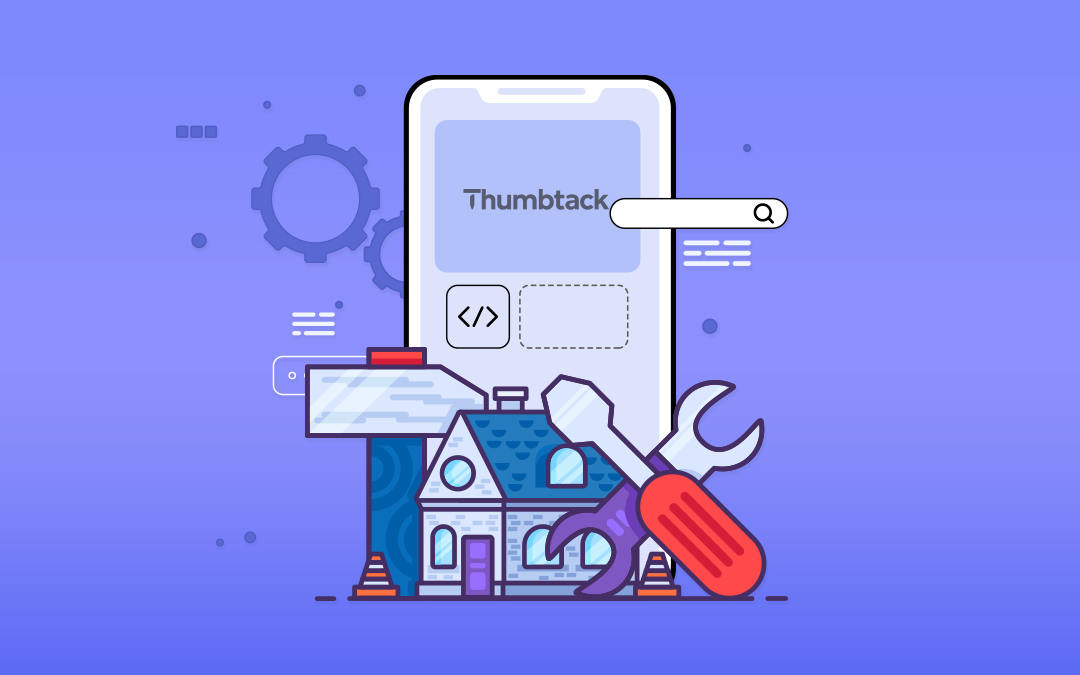How to build a home services app like Thumbtack?

As 2023 Begins, Dominance of On-Demand Mobile Applications Becomes Evident
The commencement of 2023 highlights the undeniable dominance of on-demand mobile applications within a significant segment of the app industry. The convenience of online booking for various products and services has led to the pervasive popularity of on-demand applications, and this trend extends to home service applications as well. Services encompassing cleaning, plumbing, painting, decorating, A/C repair, and more have seamlessly transitioned online, enabling individuals to promptly secure their desired services.
Anticipated Growth in Handyman Services Market
Statistical projections indicate a remarkable trajectory for the handyman services market, with an expected market value to reach $1.65 billion by the year 2032. This consistent upward trajectory reflects an unceasing pattern of growth. Investing in a handyman business within this timeframe holds the potential for substantial revenue generation.
Exploring the Process of Building a Home Service App like Thumbtack
The objective of this article is to provide a comprehensive overview of the process involved in developing a home service application akin to Thumbtack.
Evolution of Handyman Services
Before delving into the topic, let's explore the origins of the handyman app, which emerged from the traditional concept of handyman services. The term "handyman" denotes an individual skilled in a wide range of repairs, typically associated with homes or local areas.
Historically, peddlers, commonly referred to as handymen, would traverse villages and homes, offering their services or goods in exchange for monetary compensation. Additionally, they would request extra funds for transportation between locations.
Over time, the term evolved to "handyman," signifying an individual adept at providing a diverse array of services in domestic settings.
Introduction to Thumbtack
In 2008, during the burgeoning popularity of apps, CEO Marco Zappacosta recognized the challenges of locating professionals within his local vicinity. Consequently, he conceived Thumbtack.
Thumbtack stands as the largest on-demand home service marketplace in the United States, facilitating connections between customers and service providers. Covering services from cleaning to event planning, users can easily access the expertise of professionals within their geographic region via this application.
Thumbtack's Business Model
At the heart of Thumbtack's business model lies the integration of customers and service providers on a unified platform. The platform's administrative team oversees and manages the activities within this ecosystem.
Diverse Customer and Service Provider Types
The business model encompasses various customer and service provider categories:
Users: Individuals seeking services.
Service Providers: Professionals offering services and earning income.
Key Offerings
Thumbtack offers three core value propositions:
Accessibility: The platform connects professionals with customers, including small businesses lacking a robust online presence.
Comfort: The application provides a user-friendly interface that presents comprehensive information about services and service providers.
Brand Status: Thumbtack has established a prominent market presence, positioning itself as a global mobile and online marketplace.
Pricing Structure
Thumbtack's pricing structure is influenced by market expenses, fixed costs, product development, customer support, and administration.
Thumbtack's Revenue Model
Thumbtack employs several revenue streams, including:
Commission Fee: A commission-based revenue model where both customers and service providers are charged booking and service fees.
Subscription Fee: A membership fee allowing users to access the platform for an extended period.
Advertising: External advertisers can feature their products and services via paid advertisements on the website.
Reasons to Develop a Thumbtack-like App
Given the projected Compound Annual Growth Rate (CAGR) of 21.14% for home service businesses, with the market's value predicted to surge from $370.86 million in 2021 to $1826.35 million by 2030, investing in a home service app is highly advantageous.
The convenience of on-demand handyman apps resonates with people's busy schedules, attracting them to seek services from these platforms. By offering diverse services online, entrepreneurs can tap into this market potential.
Creating a Thumbtack Clone - A Comprehensive Solution
Developing a Thumbtack clone involves crafting a home service app following Thumbtack's business model. This is achieved by customizing and altering existing app development solutions to align with unique business requirements.
Technology Stack Recommendation
Choosing the appropriate technology stack is pivotal for a handyman app's success. Flutter, a cross-platform software developed by Google, is recommended due to its various advantages, including:
Unified Code Base: Flutter enables simultaneous development for Android and iOS platforms using a single code base.
Efficiency: Flutter reduces development and testing time, allowing developers to quickly identify and address issues.
Scalability: Flutter apps are scalable and suitable for startups with limited resources.
Cost-Effectiveness: Developing with Flutter is significantly more cost-effective compared to native technologies.
Cost of Developing a Thumbtack Clone
The cost of developing a Thumbtack clone varies depending on factors such as development company rates, customization, platform choice, and more. Ready-made solutions are a cost-effective option, with estimates ranging from approximately $15,000 to $50,000 or higher.
Essential Features for the Thumbtack Clone
Key features to incorporate in the Thumbtack clone app include:
For Users:
One-step registration
Service selection from categories
Multiple payment options
Cashless payments via in-app wallet
In-app chat
Service scheduling
For Service Providers:
Service management tools
Various payout methods
Job inspection and updates
Timeline view for task tracking
Earnings reporting
For Admins:
User and service provider management
Sub-admin management
Service fare management
Automatic payouts for service providers
Geofencing capabilities
Conclusion
This article aims to provide valuable insights for those interested in building an on-demand home service app akin to Thumbtack. By understanding the evolution of handyman services, Thumbtack's inception, business model, revenue strategies, and technological considerations, entrepreneurs are equipped to embark on this innovative venture. A Thumbtack clone can offer users and service providers a comprehensive platform for efficient and convenient service transactions.